The very words "Wars of the Roses" conjurer an element of mystery, intrigue, murder and interest worldwide although few would claim to have a full understanding of the reasons or events. I have been asked on many occasion to explain the Wars of the Roses to people and it is indeed a massive and complex topic. For this reason I decided to do a quick "Wars Of the Roses in a nutshell". It is by no means exhaustive, there are no military descriptions. This is a brief guide to the causes and characters involved in a time of bitter civil turmoil in England (approx. 1455 to 1487) for those who need a few points explaining or clarifying or to encourage those who seek to research further.

The Wars of the Roses in a nutshell; a very brief guide
by Veronica
This is a very brief run through to understanding the main reasons for the Wars of the Roses ( approx 1455 to 1487 ) and the main characters involved.
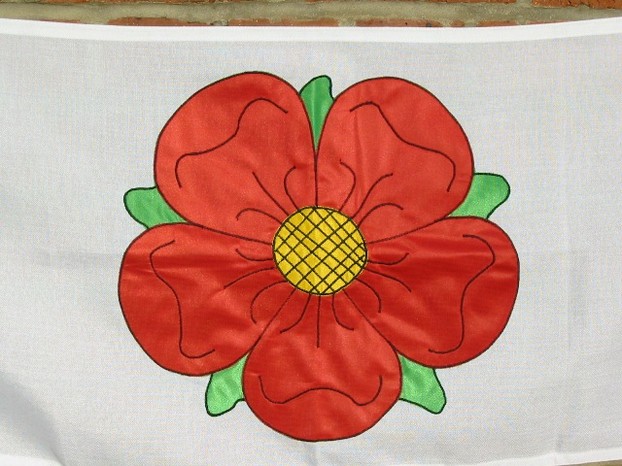 lancashire rose Wikipedia |
The Wars of the Roses in a nutshell
A very brief guide
-
Edward 111 was King of England from 1327 to 1377. He had 12 children and that is where the problem started. There were several claimants to the throne. The eldest son and heir, Edward the Black Prince died in 1376 and his son 10 year old Richard 11 inherited the throne from his grandfather Edward 111 in 1377. Richard 11's character is largely shaped for us by Shakespeare but Richard is considered to have been an unpopular king. He was usurped, imprisoned and is believed to have suffered a hideous death at the hands of his cousin Henry Plantagenet known as Bollinbrooke who became Henry 1V.
-
Henry was descended from the 3rd live son of Edward 111, John of Gaunt. Henry’s family had inherited much land in Lancashire through his mother Blanche of Lancaster who brought the Lancashire lands to the family as part of her dowry. The family therefore became known as the House of Lancaster. When Henry became Henry 1V in 1399, he legitimised his half siblings on condition that they and their descendants could never inherit the English throne. The Lancasters had a red rose as their emblem.
-
The House of York, who were descendants of the 2nd and 4th live sons of Edward 3rd had a white rose as their emblem. They felt that by the laws of kingship and primogeniture ( a hereditary system where rights passed through order of birth ) that they should have the throne because they were descendants of the 2nd live son and Lancasters were from the 3rd live son. Thus followed a series of battles and skirmishes between the cousins, from 1455 to 1487 resulting eventually in Edward 1V of the House of York taking the throne from his feeble minded Lancaster cousin Henry V1 in 1461. Edward ordered Henry to be killed whilst under arrest.
-
In the mid 1460's, Edward 1V secretly married the stunningly beautiful Elizabeth Woodville and had ten children by her. This marriage was deemed invalid though because Edward was already secretly plight trothed to the Earl of Shrewsbury’s daughter Nan Talbot- Butler, a plight troth being a binding religious contract of marriage stronger than engagement but not yet a marriage. This made Edward's ten children by Elizabeth Woodville illegitimate. Nan Talbot- Butler was dismissed to a convent in Norfolk and died. The Bishop of Bath and Wells who conducted the plight troth ceremony of Edward and Nan Talbot- Butler confirmed the event had indeed taken place. Edward's brother George, Duke of Clarence, is believed to have known about the plight troth and this is why Edward had him murdered.
-
When Edward 1V died suddenly in 1483, his brother Richard, Duke of Gloucester of the House of York, took the opportunity to claim the crown to “protect his nephews”, Edward’s sons, from their Woodville relatives. An act of Parliament declared Edward's children to be illegitimate. Richard then had the young Princes put into the Tower of London " again for their protection " where they disappeared from view forever. Richard, Duke of Gloucester became the Yorkist King Richard 111 in 1483.
-
Henry Tudor was a very weak claimant to the throne being descended from a mistress of the third live son of Edward 111 and as previously stated, that line was legitimised on condition they could never inherit the throne. His Tudor claim was hence, from an illegitimate legitimised female line who were barred from inheritance. The House of Lancaster however supported his claim and at The Battle of Bosworth 1485, Welsh Henry Tudor’s forces defeated the English King Richard 111. Richard’s body was buried in Leicester Cathedral and recently discovered under a nearby car park and reinterred in the splendour befitting a King. Henry Tudor (now Henry V11 ) legitimised Edward 1V's children and married Edward 1V’s daughter, Richard's niece, Elizabeth, to cement his claim and unite the two Houses of York and Lancaster. The red rose and white rose combined became the Tudor Rose.
Should the rightful king have been a York or a Lancaster? Was Richard responsible for the disappearance of the two young princes?
-
-
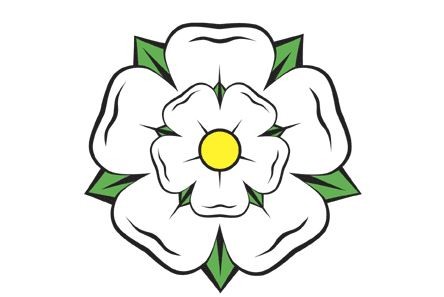 A white Yorkshire rose Wiki |
The Tudor Rose combined the two roses
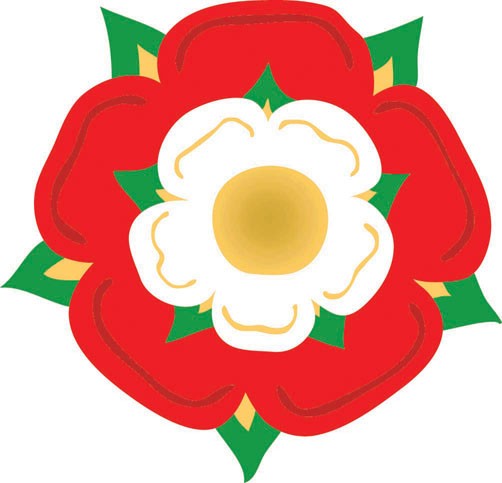 Henry combined the Yorkshire &lancashire Rose wiki |
Should the rightful king of a York or a Lancaster ?
Was Richard 111 responsible for the princes' disappearance from the tower ?
You might also like
Peterloo 18191819 will see the bi-centenary of The Peterloo Massacre when an armed Militi...
Henry Hunt ; The People's OratorAs a follow up to the Peterloo article from last month, I was asked to do a p...
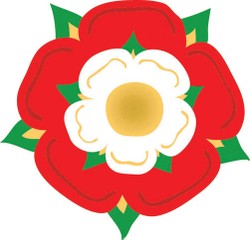


 Blarney Castle and Gardens, County Corkon 06/01/2023
Blarney Castle and Gardens, County Corkon 06/01/2023
 An Cóbh, Corcaigh, Eireon 05/29/2023
An Cóbh, Corcaigh, Eireon 05/29/2023
 Dublin ; The Book of Kellson 04/04/2023
Dublin ; The Book of Kellson 04/04/2023
 The Bee Tree Community CIC;- an online support communityon 08/24/2022
The Bee Tree Community CIC;- an online support communityon 08/24/2022
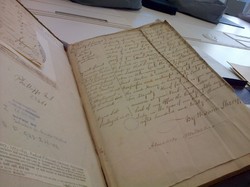
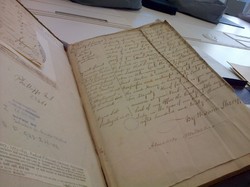
Comments
My comment below about Edward IV and Elizabeth Woodville and their family could have included an observation that I include now.
Might you have noticed that the same month and day, February 11, served as birth and death months and days for their daughter, Elizabeth?
I wonder how many monarchs and their spouses would be in her company regarding same birth and death months and days?
The last subheading, The Wars of the Roses in a nutshell, acts so understanding- and user-friendly.
Did the plight-troth, the Bishop of Bath and Wells witness and the parliamentary act do anything socially antagonistic or disrespectful against the Edward IV and Elizabeth Woodville line or did shunning not develop because of Edward IV still dominating politico-socio-economically as monarch?
(For example, some Unitedstatesians give, in historical fiction from historical traditions, to the subsequent Elizabeth I (Sep. 7, 1533-Mar 24, 1603) the prescient three-year-old question "Why My Lady Elizabeth all the other days until today (the day of Queen Anne Boleyn's [1501?-May 19, 1536] overthrow)
Might the plight-troth scandal have made King Louis XI (Jul 3, 1423-Aug. 30, 1483) of France manage his way out of his son, the subsequent Charles VIII (Jun 30, 1470-Apr 7, 1498), marrying Edward IV's and Elizabeth Woodville's daughter, the subsequent Queen Consort Elizabeth (Feb. 11, 1466-Feb. 11, 1503) of England?
Thank you for your comment below on Sep. 5, 2017, in answer to my previous observations and questions.
Plight-trothing with one English lady and marrying another appears a bit unexpected to me regarding the wedding choices of English king Edward IV.
Did not his predecessors from the Battle of Hastings onward -- apart Henry I with Matilda of Scotland and John with Isabel of Gloucester and Henry IV with Mary de Bohun -- choose as their brides ladies from outside the British Isles?
Derdriu
Thank you. The Wars of the Roses is a difficult one and I sought to simplify it .
Richard Neville , Duke of Warwick was trying to negotiate an advantageous marriage for Edward in many other useful countries all over Europe. Edward had his own ideas ; he had been plight-trothed to Nan Talbot but fell for Elizabeth Woodville. Warwick was furious that a secret marriage had taken place.
I didn't see the Hollow Crown collection. Shakespeare had his own agenda of course. It was in his interests to keep the Tudor and Stuart monarchs happy so it was in his interests to show the House of York in a bad light.
Veronica, Thank you for the very clear explanation of the Wars of the Roses. Did you see the Hollow Crown collection of Shakespearean plays on this time period? Is it true that, additionally, the kingmaker, Richard Neville, was negotiating Edward IV's marriage to either the three-year-old daughter or the 14-year-old sister-in-law of King Louis XI? If true, it would mean that Edward IV did not see marriage into the powerful Talbot family as at all advantageous!
TY Cruise
As I say, so many people ask me about it that I decided it would be easier to write it all down and then they can keep going back over it to clarify points. The British royal family at this time make all other families seem polite, normal and pleasant!
Oh my! It is all a bit confusing. But you did a nice job of explaining it succinctly.
Thank you for your supportive comment.
It is a complex topic but absolutely fascinating in that it was all within the one dysfunctional family.
TY. Your words and encouragement mean a lot. I am hoping people will be encouraged to do their own study on aspects of this fascinating topic.
Well Veronica, there is some useful historical information here. Let's hope that you write more posts.